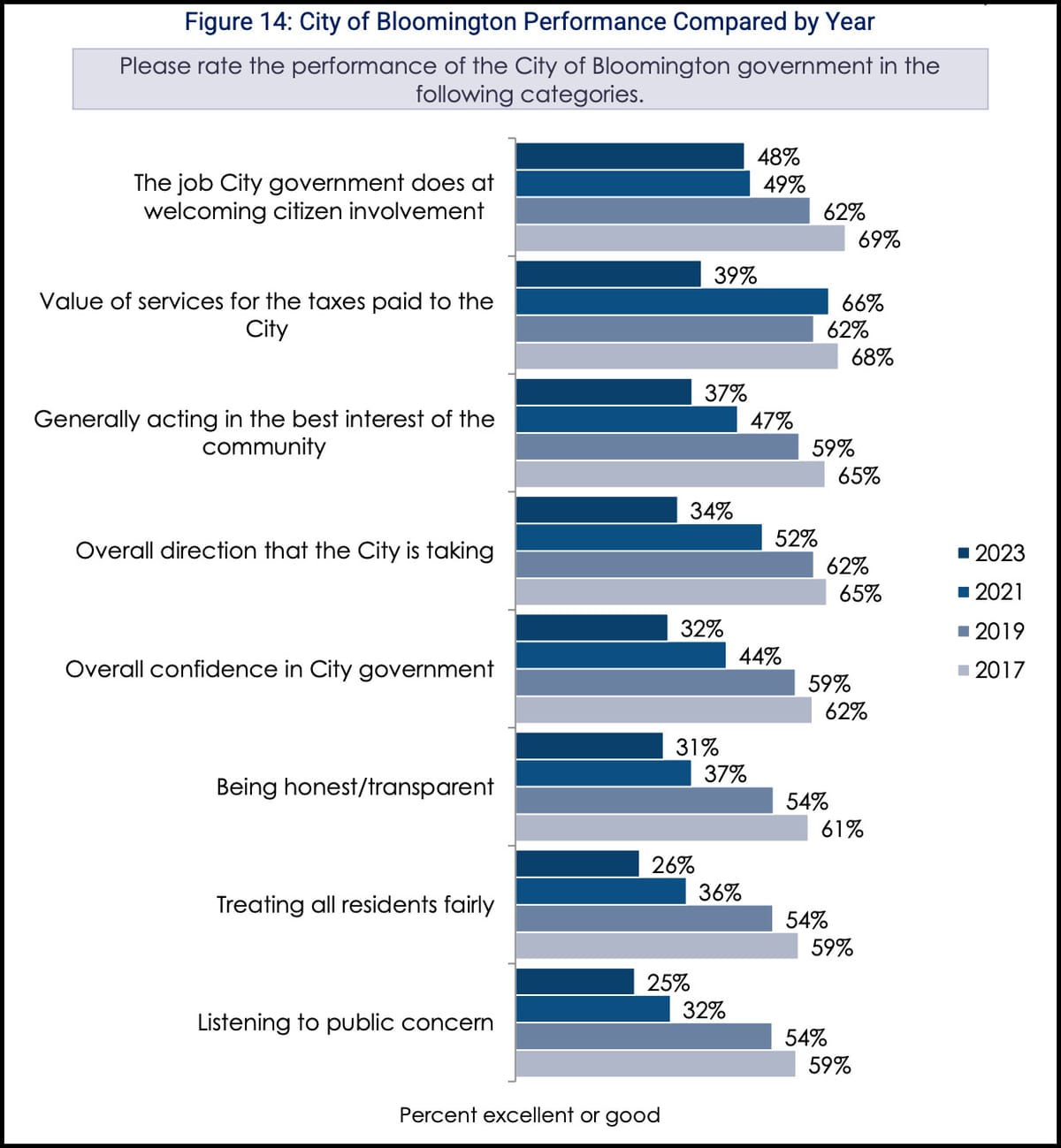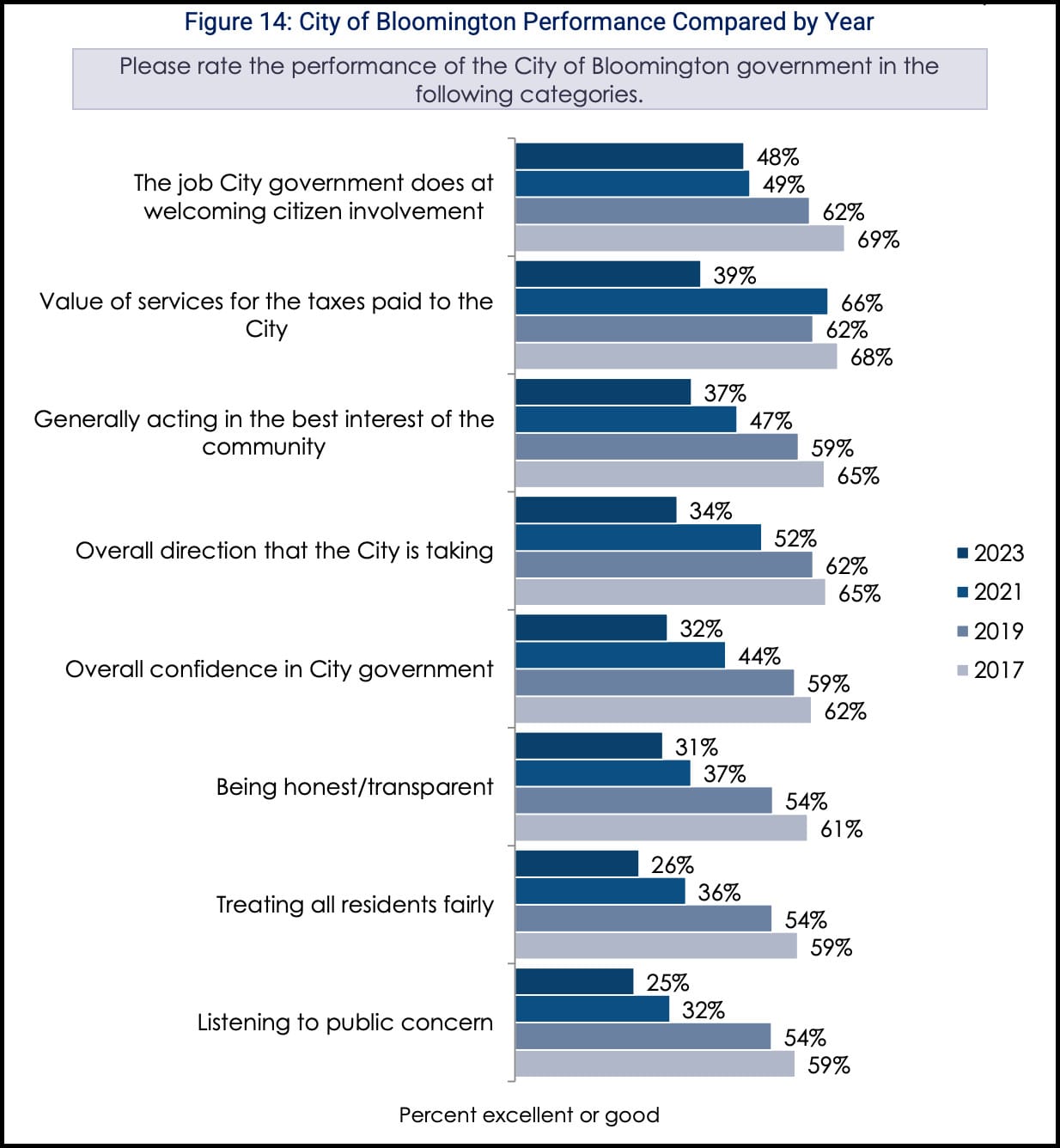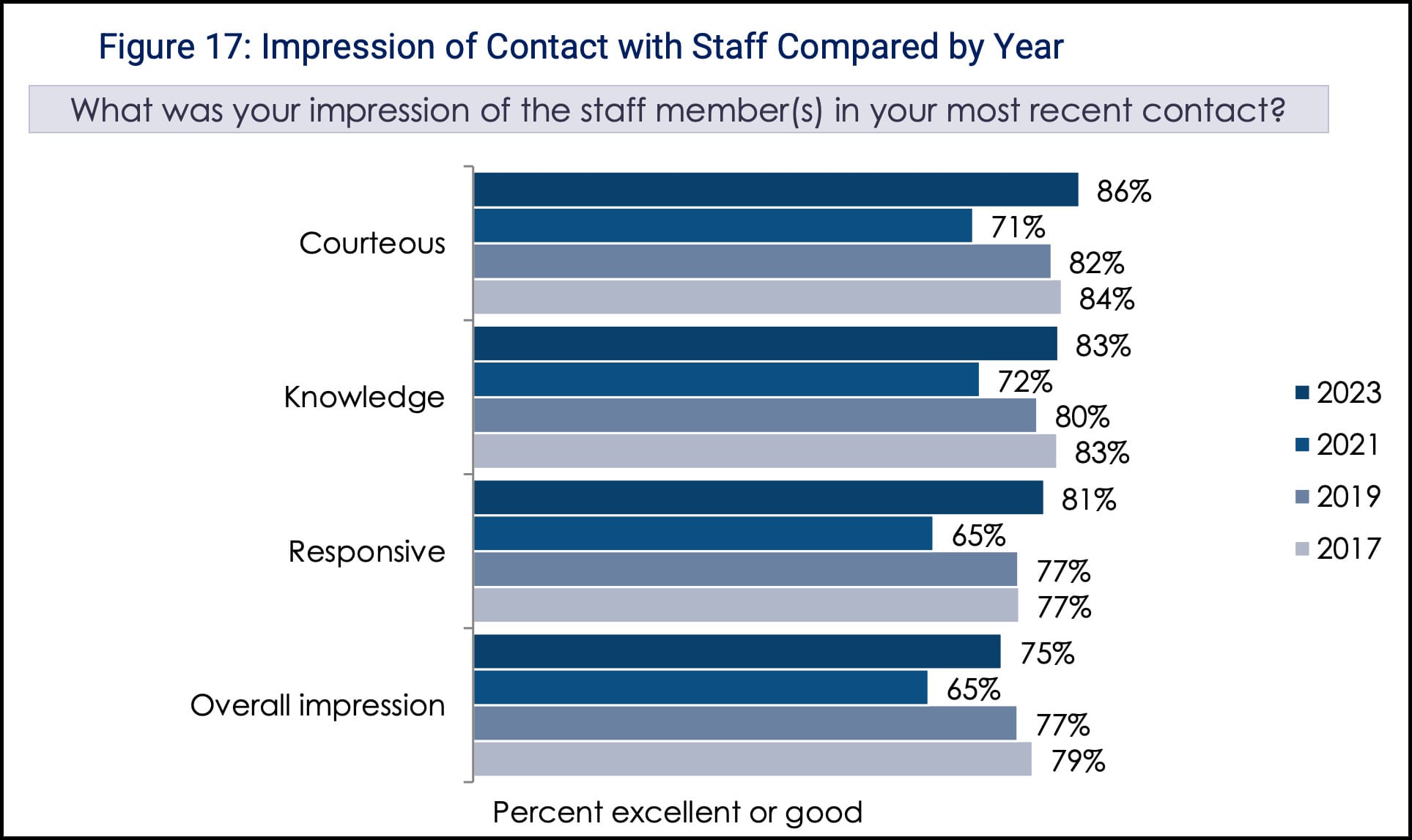Survey says: 30-point drop in Bloomington government performance since 2017



Released this week, results of a scientifically sampled survey of Bloomington residents show a marked downward trend for attitudes towards performance of city government.
Asked about their “overall confidence in city government,” just 32 percent of respondents gave it an excellent or good rating in 2023, compared with 62 percent in 2017—a drop of 30 percentage points.
Results of the survey, which was conducted in March and April this year, were released by the city on Thursday.
Also dropping around 30 points in the 2023 survey, compared to the one done in 2017, were several other measures of local government performance, including: the value of services for the taxes paid to the city; generally acting in the best interest of the community; overall direction that the city is taking; being honest and transparent; treating all residents fairly; and listening to public concern.
That contrasts with the assessment of city staff by survey respondents, which shows an upward trend since 2021, after a drop from 2019 to 2021. That brings most measures of city staff performance back to a bit better than the levels that were measured in 2017.
As an example, the rating of respondents of the staff as “courteous” increased from 71 percent to 86 percent between 2021 and 2023—which is 2 points better than the 84 percent recorded in the 2017 survey.
The survey has been conducted every two years for the city of Bloomington by the same firm—Polco/National Research Center. That’s four surveys worth of data that can be tapped for trends.
The city council received a presentation of the basic survey results at its Wednesday meeting. Giving the presentation was Jade Arocha, who is director of survey research for Polco/National Research Center.
In this year’s survey, there were no open-ended questions, except for one demographic item.
In past surveys, some of the content questions had open-ended response options.
Other notable findings in the survey included downward trends in perceptions of safety and quality of police services.
The number of respondents who rated the quality of police services excellent or good dropped from 78 percent in 2017 to 46 percent in 2023.
The number of respondents who said they felt very safe or somewhat safe in downtown Bloomington at night dropped from 56 to 44 percent between 2017 and 2023.
Homelessness continues to be assessed by survey respondents as a significant challenge in Bloomington. Around 95 percent of respondents have said it’s a “major” or “moderate” challenge in the last two survey years.
Arocha told the city council that for her firm’s clients across the country, ratings related to homelessness and perceptions of safety have generally tended downward over the last few years.
Results on one survey question are probably of interest to anyone who is studying the background for this fall’s MCCSC (Monroe County Community School Corporation) referendum to raise property taxes. If passed by a majority of voters, property taxes would go up by 8.5 cents, to fund early childhood education.
The related question asked respondents about the availability of affordable child care and pre-school. In 2017, 37 percent of respondents rated access to affordable child care and pre-school as excellent or good. In the 2023 survey, that number had dropped by half, to about 19 percent.
The survey included at least a couple of traffic-related items. One question tried to gauge attitudes towards bicycling infrastructure, by giving the background of the new 7-Line separated bicycle lane and asking “Are you satisfied with the current bikelane infrastructure in Bloomington, or would you like to see changes?”
Of the survey respondents, 38 percent said they’d like to see more bicycle lanes, while 14 percent said they’d like to see fewer bicycle lanes. Saying they were satisfied with the amount of bicycle lanes were 17 percent of respondents, while 31 percent had no opinion.
Asked how they felt about automatic ticketing of drivers who run red lights or drive over the speed limit, 38 percent indicated either some or strong support for the idea. Of survey respondents, 48 percent were either against automatic ticketing or strongly against it. Having no opinion were 15 percent.
Probably having an impact on responses to some questions in 2021 compared to 2023 was the lessening impact of the COVID-19 pandemic. As one example, the percentage of respondents who reported watching a meeting of elected officials online or on CATS dropped from 36 percent in 2021 to 25 percent in 2023.




Comments ()